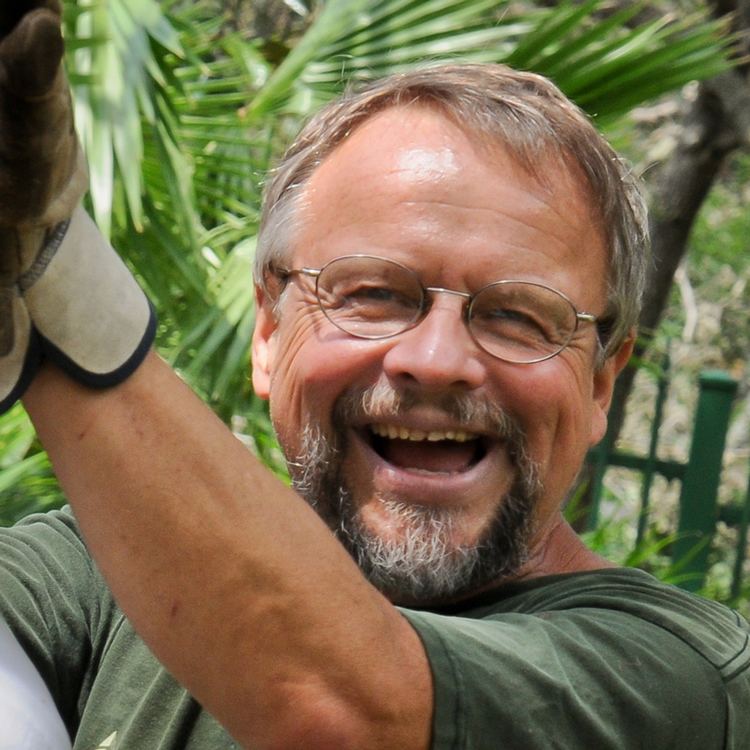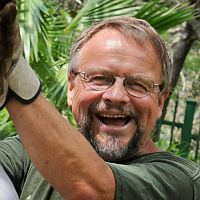Residence USA Name Bernd Wursig Doctoral advisor Charles Walcott | Nationality German/U.S. | |
 | ||
Born November 9, 1948 (age 76) Barsinghausen, Germany ( 1948-11-09 ) Fields Marine mammal behavioral ecologist Institutions Texas A&M University at Galveston | ||
Bernd wursig historical perspectives interview excerpt aquatic mammals journal
Bernd Gerhard Würsig (born 9 November 1948 in Barsinghausen, Germany) is an educator and researcher who works mainly on aspects of behavior and behavioral ecology of whales and dolphins. Much of his early work was done in close collaboration with his wife Melany Ann Würsig (born Carballeira), and they have published numerous manuscripts and two books together.
Contents
- Bernd wursig historical perspectives interview excerpt aquatic mammals journal
- Early Career and Education
- Teaching
- Research
- Major Publications
- Honors and Awards
- References
Early Career and Education
Bernd Würsig is the youngest of three sons of Gerhard and Charlotte Würsig, Silesian refugees who moved to (then) West Germany after the 2nd World War, and to the United States under a refugee family visa in 1956. They settled in Ohio, and Würsig became interested as a boy in marine mammals after reading books by the Austrian explorers Hans Hass and Lotte Hass, French Jacques Cousteau, and American John Cunningham Lilly. He went to Ohio State University, and received a Bachelor of Science degree in Zoology (minor in Germanic Literature) in 1971. Würsig went to Stony Brook University (then the State University of New York at Stony Brook), 1971-1978, in an interdisciplinary Ph.D. program with advisors in the Departments of Marine Science, Ecology and Evolution, and Neurobiology and Behavior. His advisors in the latter two, George Williams in Ecology and Evolution and Charles Walcott in Neurobiology and Behavior, had a strong influence on Würsig’s career, as the former imbued him with a sense of the wonders of animal social/sexual strategies, and the latter with a lifelong appreciation for how to think about animal capabilities, relative to our own capabilities of observation with basic tools such as binoculars to sophisticated radio, theodolite, and other remote sensing techniques. Würsig's field advisor Roger Payne, the discoverer of humpback whale song and long-range communication in fin and blue whales, was his mentor during field work on dolphins in coastal Patagonia, Argentina. Würsig also worked with Kenneth S. Norris, University of California at Santa Cruz, 1978-1981, as a National Institutes of Health and National Science Foundation post-doctoral fellow, and then became assistant professor at Moss Landing Marine Laboratories, central California, where he went through the professor ranks in the 1980s, becoming full professor in spring 1989. That year, he and Melany and their two children Paul and Kim moved to Texas A&M University, where he started the Marine Mammal Research Program (now Marine Mammal Behavioral Ecology Group), and which he still uses as home base.
Teaching
Würsig teaches undergraduate and graduate courses in aspects of marine mammalogy, specializing in behavior and behavioral ecology. He has published widely in the popular literature as part of teaching endeavors, such as for the journals Natural History and Scientific American, and he has been advisor to numerous movies made for television, as well as the IMAX movie “Dolphins” (2000) that was nominated for an Academy Award, Best Documentary Short Subject. He also leads one to two field courses per year on marine birds and mammals in New Zealand.
Research
Most of Würsig’s research, while focused generally on social, sexual, calf rearing, and foraging strategies, has been related to human use of the marine environment, as well as tucuxi and boto dolphins of the Amazon and the now believed to be extinct baiji of the Yangtze River. He may be the only researcher to have worked with both the baiji and the presently highly endangered vaquita, or Gulf of California harbor porpoise of the northern Gulf of California, Mexico. Besides working with river dolphins in Peru and China, Würsig has worked with oceanic whales in Argentina, far east Russia, and the Arctic; and a host of delphinids from the Bahamas to Patagonia Argentina, from north-central California to Hong Kong and South Island New Zealand. A summary of his research life, especially as related to social strategies, is presented by Grady (2003). Much of his work has been collaborative, and he has published with students and colleagues on issues of multi-species interactions among pinnipeds and cetaceans, marine mammals and marine birds, and noise pollution and mitigative effects. His present work is with Indo-Pacific humpback dolphins in Hong Kong, dusky dolphins on the South Island of New Zealand, and western gray whales of far east Russia, all collaboratively with graduate students.

Bernd Würsig and his wife Melany Würsig first described the lives of dusky dolphins, with day/night, seasonal, and overall habitat use patterns. They then went on to describe foraging strategies of dusky dolphins that herd anchovy and communicate with each other within and between groups, with an important communication mode apparently mediated by leaping.
Bernd and Melany Würsig also developed detailed non-invasive photographic recognition of dolphins, a technique now used by hundreds of researchers worldwide, and discovered that common bottlenose dolphins, have an “open” social system of ever-changing affiliations of individuals in groups and subgroups, a now common-accepted concept for many species and populations.
Würsig also accepted two ideas of the great biologist Roger Payne, his field mentor during Ph.D. work, and expanded these throughout much of his own research. One was the development of theodolite tracking of near-shore cetaceans and boats; the other was identification photos and behavioral descriptions of animals from circling aircraft, with which much behavioral description of bowhead whales, was facilitated by Würsig in the U.S. and Canadian Arctic. This work led to detailed descriptions of surface foraging and social behavior, as well as the fact that bowhead whales at times feed on bottom-dwelling organisms.
Würsig and several colleagues developed and tested a bubble curtain system to reduce underwater industrial noises, and this technique has more recently received much engineering and environmental attention.
Major Publications
Würsig has published about 150 peer review manuscripts, but the most important are probably those that first described results of individual recognition of dolphins by dorsal fin markings, theodolite tracking, and the development of a bubble curtain system to lower the intensity of stationary underwater industrial noises. Würsig co-wrote or co-edited books on the biology of spinner dolphins, marine mammals of the Gulf of Mexico, an encyclopedia of marine mammals, biology of dusky dolphins, and a “coffee table” illustrated National Geographic book on whales and dolphins. He has written much on behavior and behavioral ecology of cetaceans, with a 1989 summary paper in the journal Science, and popular publications in Scientific American, 1979, 1988. He recently co-published a monograph on social ecology of delphinids, with Shannon Gowans and Leszek Karczmarski.
